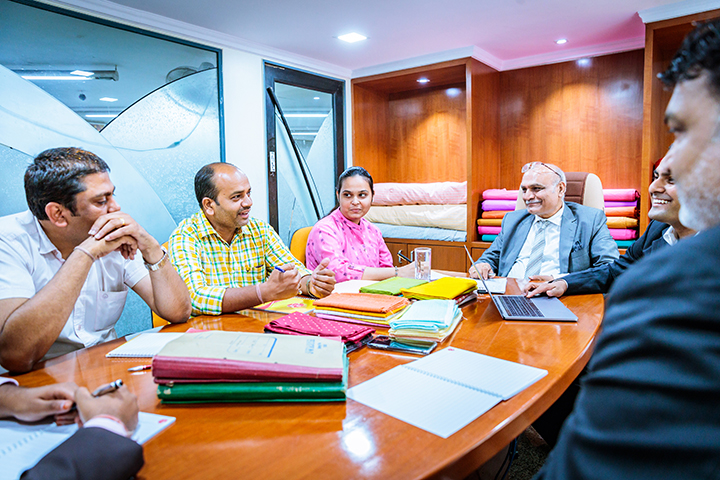What is the Business Case for Private Investment in the NAP Process?
Businesses around the world—big and small, from large-scale banks to smallholder farmers—invest in climate change adaptation every day.
They may not label it as such, but as they respond to droughts, recover from floods, or plan ahead for the next cyclone season, many are strengthening their operation’s resilience to current and future climate change.
In order the make these investments, which include time, capacities and money, there must be a strong business case for doing so. Fishers, farmers, miners, bankers and others will weigh the costs and risks of the investment against its expected returns—returns that can include more certainty in their operations, a more secure supply chain or a new market opportunity.

While investment in adaptation may seem like good business practice, it is not always an easy argument to make: the risks associated with climate change may be unknown or misunderstood by investors; the cost of action may be high; returns on investments may be uncertain; adaptation options may be unclear; or indicators of success may be difficult to define. This is particularly the case for small business owners in developing countries; for them, resources are often already stretched, and investments in immediate day-to-day operations take precedence over concerns far down the road.
This will be a key challenge as developing country governments formulate and begin to implement their National Adaptation Plans (NAPs). Achieving the ambitious and necessary adaptation pathways and goals contained in the NAPs will not be possible without the participation of the private sector, among other actors. They are key engines of economic growth and will be relied on to create the jobs needed to support adaptation, to develop the products and services needed for societies to become more climate-resilient, and to finance— directly or indirectly—many adaptation actions.
To enable the strategic and well-informed engagement of the private sector in climate change adaptation activities—including as designers, implementers, financers or evaluators— governments will need to establish and communicate the business case for investing in adaptation. Doing so will help to incentivize much-needed support and investment for the NAP process.

So what is the business case for private sector actors—from multinational corporations to smallholder farmers—to invest in the NAP process?
For one, direct losses from natural disasters between 1998 and 2017 cost morethan USD 2.9 trillion—77 per cent of which were climate-related. In 2018 alone, natural disasters led to more than USD 225 billion in economic damages globally, according to a report from the National Oceanic and Atmospheric Administration. As climate change continues to increase the frequency and severity of extreme weather events, adaptation action will be necessary to maintain international business continuity and growth.
Moreover, at the most basic level, adapting to the impacts of climate change—whether at the national, subnational or community level—cannot be the responsibility of national governments alone. While public financing is crucial, particularly during the development phases of the NAP process, it will not be enough to address all adaptations needs.
The process of establishing a business case for adaptation investment often needs to be context- and company-specific. In this sense, threatening numbers about global catastrophe—however pertinent—may not be enough to effectively engage the private sector in a country’s NAP process.
Despite the aforementioned challenges, many companies have been able to establish this business case and have initiated support for and investments in adaptation, through the NAP process and otherwise. Private sector actors have done so for three key reasons.
To manage risks for business continuity and reputation.
Climate change can pose serious risks to the activities of businesses. Physical risks—including drought, floods and severe weather events—can damage relevant property and disrupt trade. As a result, some companies are investing in adaptation to climate-proof their supply chains, protect their operations and avoid future loss.
In Madagascar, for example, companies including Danone, Mars, Firmenich and Veolia are providing EUR 2 million to help local farmers—representing more than 6,000 hectares of vanilla production—use more sustainable farming practices. In doing so, these partners are helping to increase the adaptive capacity of smallholder farmers, while managing climate risks in the supply chains of their products.
To capitalize on new markets and business opportunities.
A 2015 survey by AXA Group and UN Environment found that 53 per cent of businesses in developed and emerging markets believed that climate change represented an opportunity for their businesses. Developing and distributing new goods and services that respond to local threats posed by climate change—climate-resilient seeds, for example, or equipment for early-warning systems—represents a key opportunity to simultaneously profit and help local populations adapt.
To comply with policies, regulations, and investors’ interests.
Finally, some financiers and enterprises are investing in adaptation in response to ongoing or upcoming policies, regulations or investor interests. EU-registered pension funds, for example, are now required to consider and disclose climate risks in their investment decisions. This disclosure requirement is pushing companies to make smarter investments in adaptation in order to reduce their exposure to climate risks.
***
Governments have to work with a range of partners—from civil society and private sector actors to bilateral and multilateral development agencies—as they embark on the NAP process. To engage with the private sector in particular, governments must understand and communicate the business case for investing in adaptation; doing so effectively will mean working with partners in the media, as well as business associations and chambers of commerce. This is a good starting point, but more will also need to be done; policy-makers and practitioners will have to put in place key enabling factors to encourage and facilitate private sector engagement in all phases of the NAP process.
Over the next month, the NAP Global Network will be taking a closer look into these key enabling factors. In our next blog, we will explore how effective and meaningful information-sharing can enable private sector engagement in the NAP process. We look forward to sharing it with you.

This post is the first of our five-part blog series on engaging the private sector in national adaptation planning processes.
Blog | Why information sharing is key to engaging businesses in the NAP process (Part two)
Blog | How Institutional Arrangements Can Engage Small Businesses in Climate Adaptation (Part four)
Find out more about our work on Financing NAPs.
You might also be interested in
What Is the NAP Assessment at COP 29, and Why Does It Matter?
At the 29th UN Climate Change Conference (COP 29) in Baku, countries will assess their progress in formulating and implementing their National Adaptation Plans. IISD’s adaptation experts Orville Grey and Jeffrey Qi explain what that means, and what’s at stake.
Toolkit for Monitoring, Evaluation, and Learning for National Adaptation Plan Processes
This toolkit provides practical guidance for the development and continuous improvement of MEL systems for national adaptation plan processes to government teams and practitioners working on adaptation.
Progress on Vertical Integration in National Adaptation Plan Processes
This synthesis report presents an analysis of how countries are advancing vertical integration in national adaptation plan processes.
Four Key Elements to Ensure a Successful Global Goal on Adaptation
As the final rounds of negotiations on the GGA kick off at COP 28, a looming question remains: Will it be comprehensive enough for countries to implement in the years ahead?
